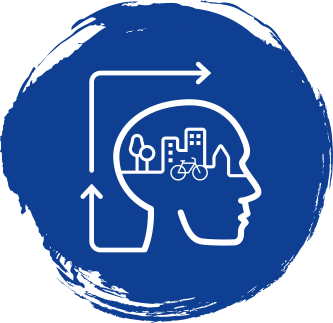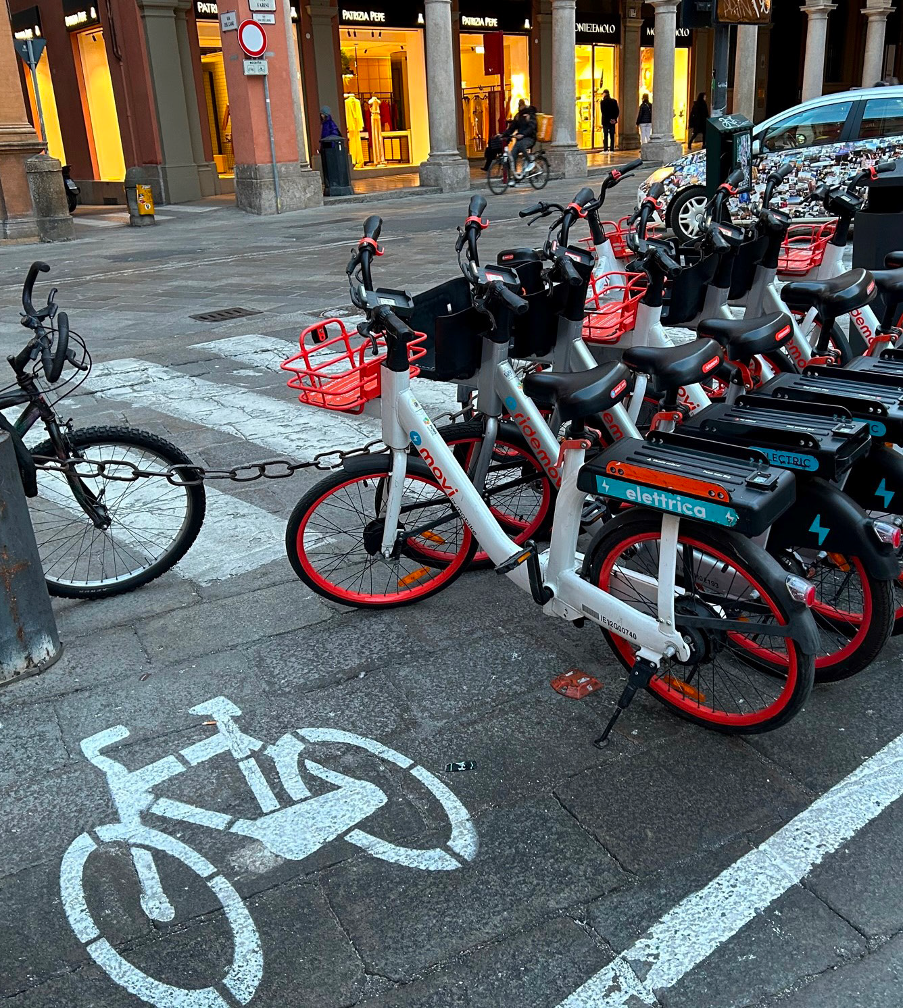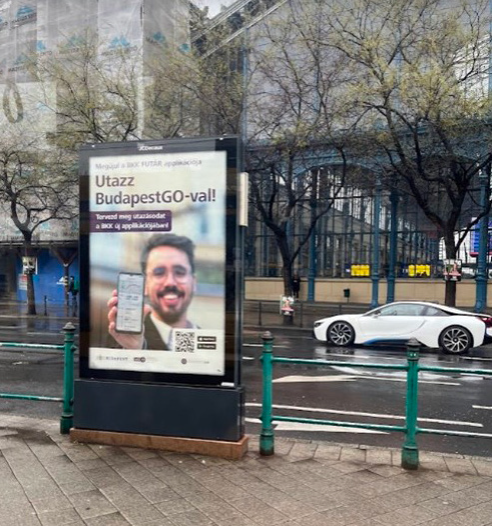Topic outline
Integrated Multi-modal Mobility Solutions

Safe, affordale, accessible and well-connected public transportation systems are critical to provide all residents with a convenient alternative to the private car. There are an array of innovative interventions in this field – including those related to: maintenance of transport fleets, ticketing systems, service integration and intermodality, accessibility for people with reduced mobility, new management and financing schemes – which can be applied in local contexts. In particular, FastTrack cities working in this cluster will explore public and shared mobility, multi-modal hubs, integrated network services, so-called Mobility as a Service (MaaS), and integrated e-ticketing systems.

This document highlights major insights from the Integrated Multi-modal Mobility Solutions cluster and cross-cutting theme of FastTrack.
Cross-cutting themes
Based on FastTrack Needs Assessments, the FastTrack Local Affiliates are working in four topical clusters. This will enable them to exchange specific insights in the areas where they most need innovative solutions that foster more sustainable transport and mobility. In addition, FastTrack has identified four cross-cutting themes relevant to all FastTrack Affiliates and Ambassadors. These themes will be integrated into and explored by all FastTrack clusters.

Mobility and transport systems have huge impacts on our daily lives. They shape our behaviours and choices regarding where to live, shop, work, and how to spend our leisure time. Behaviour change must go hand-in-hand with new innovations in order to swiftly and sufficiently transform our mobility and transport systems to be sustainable in the long-term. The FastTrack Community will consider how innovations will change behaviours, as well as how local behaviour change can support speeding-up the uptake of innovations.

Reliable data is critical to influence decision-making, secure buy-in, move forward with swift implementation, and monitor sustainable mobility innovations. Often, relevant data spans several areas, groups, modes of transport, and more. This breadth of data is not always available, easily managed, or comparable. Furthermore, collecting mobility and transport data can be challenging, due to privacy concerns, as well as challenges working with the private sector, who may be reluctant to share commercially-sensitive data. Innovative data platforms are needed, which bring all types of mobility data together, and make this available to public and private stakeholders. Furthermore, innovative approaches to digitalisation and data management may be relevant to all local authorities, across all facets of sustainable mobility and transport.

Even the most ambitious and proactive local authorities will struggle to implement innovative solutions without appropriate funding. Furthermore, new business models and financing schemes can themselves be innovations with far-reaching potential impact. Both of these components – namely, funding innovative solutions, and new financing schemes as innovative solutions – are relevant to all FastTrack local authorities, and will be considered across all clusters.

New solutions will, simply put, not be successful in the long-term without the buy-in of local communities. New governance arrangements that foreground participation and cooperation are needed to ensure that mobility and transport systems are transformed as soon as possible, and in a sustainable and long-lasting manner. Similarly to other FastTrack cross-cutting themes, 'governance, participation and cooperation' can be seen as critical to innovative mobility solutions in two ways: firstly, FastTrack local authorities will explore governance and participation arrangements that support the speedy implementation of mobility solutions; secondly, new governance schemes will be explored as mobility innovations in and of themselves.
CASE STUDIES
Case Studies into eight FastTrack cities highlight the road to sustianable mobility innovation deployment

Bologna is the capital and largest city of the Emilia- Romagna region in Northern Italy. It has nearly 400.000 inhabitants. The metropolitan area including the city and its functional urban area has about 1.000.000 inhabitants. It is one of 13 Italian metropolitan areas which receive specific funding and support from the Italian government because of their importance for the country’s development.

Budapest, the capital of Hungary, is home to 1.750.000 inhabitants and is located in the northern part of the country. It is the centre of the Budapest metropolitan area, which contains approximately 3.300.000 inhabitants (about one third of Hungary’s population). Budapest has elaborated and adopted an Integrated Urban Development Concept, Climate Plan, Sustainable Energy Action Plan, Sustainable Urban Mobility Plan (SUMP), and Sustainable Urban Logistics Plan (SULP). Mobility planning is taking place at the municipal / city level.

Debrecen has about 200.000 inhabitants (second largest city in the country) and is located in the eastern part of Hungary, about 30 km away from the Romanian boarder. Debrecen has elaborated and adopted several strategies, programmes and plans related to sustainability issues, including a development plan “Debrecen 2030”, an Integrated Urban Development Concept, Sustainable Energy Action Plan, a Smart City Strategy, and a Sustainable Urban Mobility Plan.
State-of-the-Art Cases
This FastTrack tool highlights State-of-the-Art cases that showcase how local areas have sped-up their roll-out of sustainable mobility innovations.
FastReads
One page summaries of key FastTrack products to help you navigate our wealth of outputs.
To ensure that FastTrack's work is effective and scalable, it is important to assess how the project transfers knowledge to its local areas, and how this knowledge increases local capacities, and improves innovation implementation. FastTrack is also using "Innovation Performance" assessment to gauge its local areas' capacities to swiftly roll-out innovations, and to help identify factors that may enhance innovation capacity at the local level. Deliverable 4.1 presents FastTrack's novel assessment approach.
To ensure that FastTrack's work is effective and scalable, it is important to assess how the project transfers knowledge to its local areas, and how this knowledge increases local capacities, and improves innovation implementation. FastTrack is also using "Innovation Performance" assessment to gauge its local areas' capacities to swiftly roll-out innovations, and to help identify factors that may enhance innovation capacity at the local level. Deliverable 4.1 presents FastTrack's novel assessment approach.
At the very beginning of the FastTrack project, the needs of the 24 FastTrack Local Areas were assessed via an online survey and interviews. Delivearble 1.2 summarises the findings from that Needs Assessment. We overview the areas’ planning contexts and recent success stories, before going into more details about the innovative solutions each area plans to deploy within FastTrack; local drivers and barriers for innovation; and areas’ specific learning needs.
FastTrack is building up local authorities’ capacity to help speed up the roll-out of innovations that can help them forge more sustainable mobility and transport. Any project this ambitious must have a clear set of methodologies to build the necessary capacity. FastTrack’s capacity building handbook sets up the methodological framework for all capacity building activities carried out within the project, which aim to support peer-to-peer exchange between local areas.
FastTrack has an ambitious goal: the project is using a suite of interrelated methods to help local authorities to speed up their roll-out of innovations that can help them forge more sustainable mobility and transport. Any project this ambitious must have a clear set of structures in place that can support the project to ensure that it is effective – both with respect to its internal working, and that it is effective in accomplishing its external goals.
Cities across Europe and beyond have established high-level objectives to tackle the negative consequences of climate change. These new very ambitious objectives require an innovative approach. The innovation in implementing sustainable mobility solutions is at the core of the FastTrack project. This report summarises a programme of actions to be undertaken by each city involved in FastTrack for the remainder of the project and beyond. This actions’ program is facilitated by the tools and methods developed and applied by FastTrack project partners and provides cities with knowledge and tailored assistance on the effective deployment of their sustainable mobility innovation.
Summary of D4.2: "Results of the engagement strategy developed and its strengths and weaknesses" European cities are motivated to act towards the achievement of climate-neutral mobility solutions. Capacity building that fills skills gap and/or enables acquisition of new ones related to the planning and implementation of such solutions can empower local and regional authorities to identify, adopt and eventually deliver them properly.
This reports presents the learning outcomes from the five Learning Sequences of the FastTrack Peer- Learning Programme. The latter had as ultimate goal to allow 24 Local Authorities to get the right input, knowledge and confrontation with other city peers to develop a Deployment Plan around a chosen innovation. The versatile Learning Programme led to a variety of learning outcomes that can help other city representatives as a guideline for their future learning needs.
Summary of D2.4: “Summary of Challenges and Next Steps for FastTrack Local Affiliates” The FastTrack project has collected a large number of challenges and learning needs throughout the project duration. This report assesses the evolution of the challenges expressed and identified by the Local Affiliates and Ambassador Cities from the beginning to the end of the FastTrack project. As such, it allows to draw conclusions on the learning curve of the representatives that participated in the FastTrack Capacity Building Programme.







